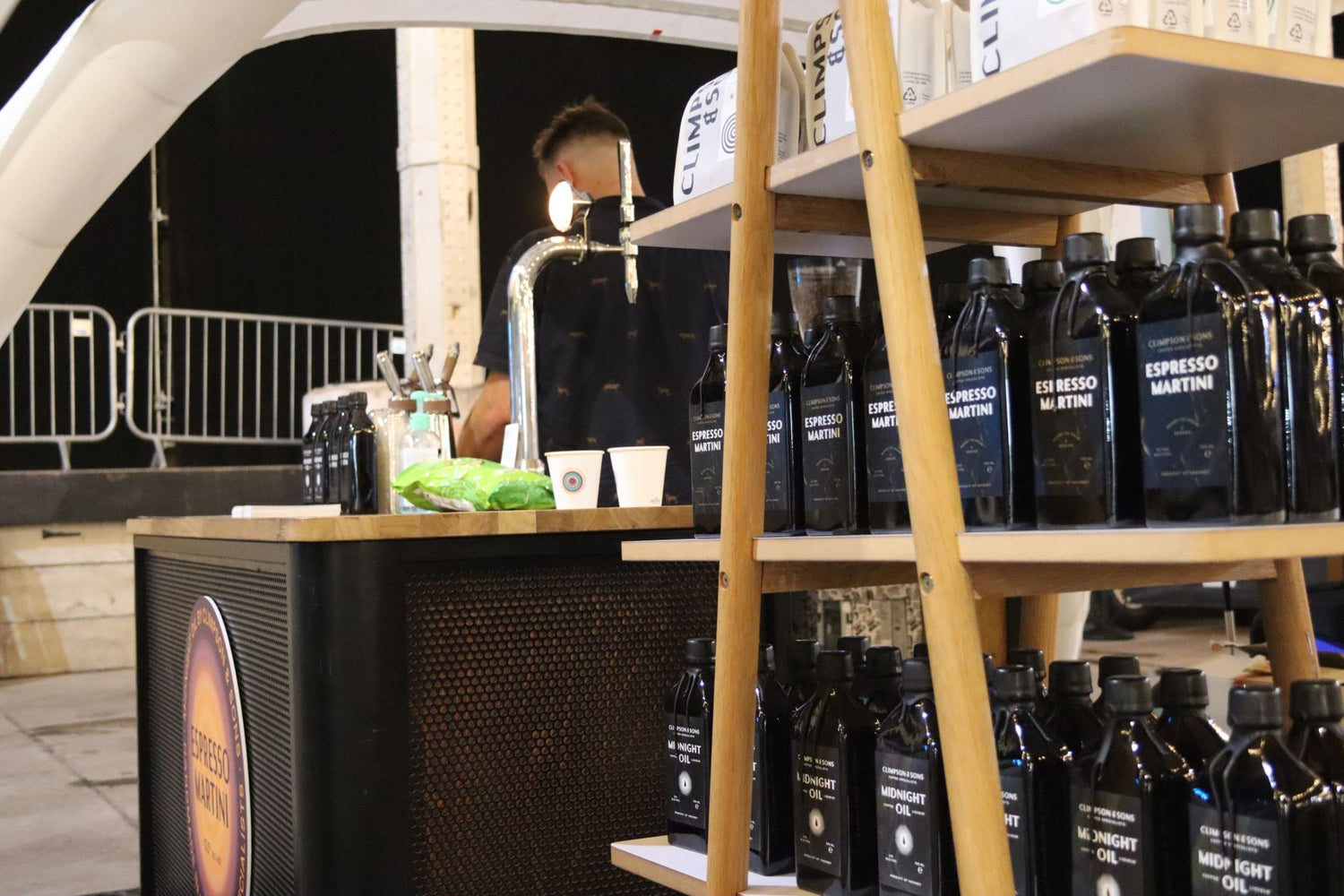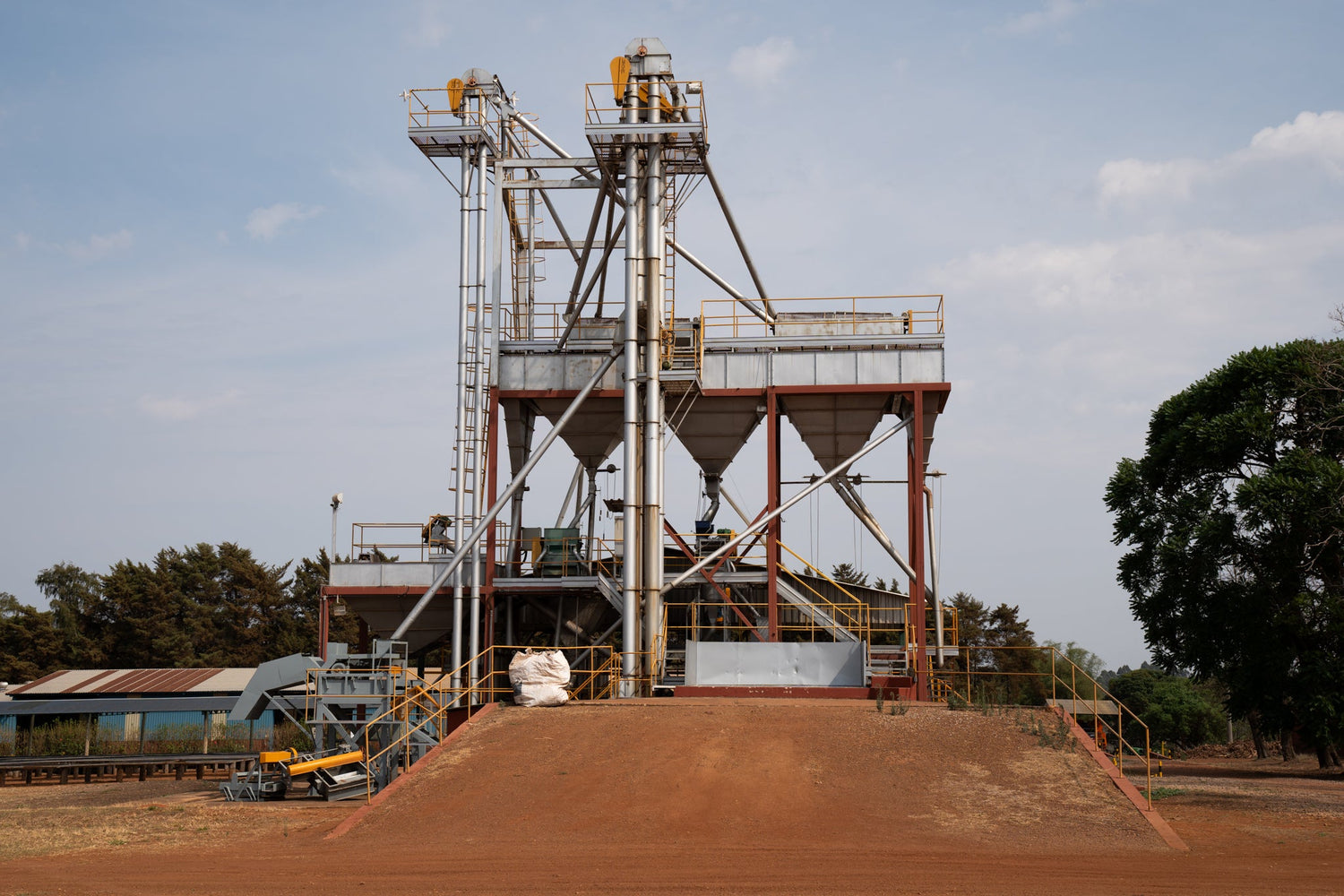Product development is a term that encompasses the multiple stages of introducing a new product to the world. Beginning with an idea or concept, this is translated into something physical and replicable as it’s brought to the market. It’s a product’s entire journey, or life cycle. Here we break down the story of our Espresso Martini from idea to reality - reflecting on some of the challenges we found along the way.
The Climpson & Sons ready-to-drink Espresso Martini began as a really big idea. An idea to bring specialty coffee to the craft drinks industry, providing a delicious and well-sourced product that’s available at an instant through the pour of a tap. We weren’t the first to consider cocktails on tap and there’s no doubt there’s been a building interest in ready-to-serve cocktails in the past few years. But beginning with the starting point of a specialty coffee, roasted and brewed to perfection, was something new and unique. This drink was destined to be flavour first, designed to showcase the distinctive profile of Climpson’s specialty coffee, with a boozy kick.
Bringing a vision for an original product to life is one of the biggest hurdles for entrepreneurs such as ourselves. This project was no different. Here’s how that product development journey looked for us, plus reflections on some of the things we learnt along the way.
Thanks to Shopify for laying the framework in their versatile 7 step process here.
1. IDEA GENERATION
“Many aspiring entrepreneurs get stuck on the first stage: ideation and brainstorming. This often is because they’re waiting for a stroke of genius to reveal the perfect product they should sell. While building something fundamentally ‘new’ can be creatively fulfilling, many of the best ideas are the result of iterating upon an existing product.”
It all starts with an idea. The idea was an espresso martini, served on tap. We first trialed the idea at our coffee bar in Old Spitalfields Market. Cocktails on tap were a real burgeoning concept; it had rarely been done before and even rarer still in the specialty market. The espresso martini seemed like a great fit as it’s difficult to make in cocktail bars due to the need for a fresh espresso. It was a natural progression for us at Climpson's given our love of all things food and beverage.
2. RESEARCH
When we first started our experiments it was early days for craft cocktails on tap in the UK. A few other companies had just started also at that stage, but we were all at nascent stages of development. We didn't get to try these local competitors until a little further down the track. The early stages for us were all about recipe development, which was surprisingly quite quick. After that came the more technical side. Nitrogen infused cocktails were basically non-existent, so we really had to study, turning ourselves into technicians and chemists to work out how to do it.

3. PLANNING
Our initial dream was to be in every pub in East London, and then beyond. It would be a setup that could just be attached to an existing beer system, which we initially tried. The market position was to be a premium, superior tasting product using quality ingredients, but also keeping ourselves affordable.
This vision changed when we realised that we needed a separate nitrogen infuser as 'nitrogenating' the kegs didn't work. Also, the ideal serving temperature of an espresso martini is -2° and pub cellar setups only went down to around 4°. That meant we needed a dedicated setup for our drink, including a nitrogen infuser which in turn increased installation price. This meant the keg side of the business was really best suited to high volume venues. You can find us on tap in Blues Kitchen and Jazz Cafe. These are big spaces, where the drinks really flow. Knowing this we then knew to approach high volume venues, where the demand was definitely there. For the lower volume venues we found a brilliant solution in the 5L bag-in-box which could be served in lower volume spots using a nitropress dispenser. This kept the consistency of the product spot on and has been really popular with the smaller venues.

4. PROTOTYPING
“It’s unlikely you will get to your finished product in a single attempt—prototyping usually involves experimenting with several versions of your product, slowly eliminating options and making improvements until you feel satisfied.”
The first batches were actually great. We wanted to make everything from scratch with premium ingredients and generally when you have good quality produce, everything tastes good anyway. The main issue we faced was brewing coffee on such a large scale. Another element we changed after a while was incorporating cacao nibs; we soaked the rum in cacao nibs and then froze the rum, which in turn hardened the cocoa butter, we would then filter out the solidified cacao fat. Although this was incredibly delicious it wouldn’t filter the butter out fully and we found there was separation in the kegs over time. The last 1/8th of the keg became like chocolate milk. Once again, delicious, but not great for consistency behind the bar. After that we found an extract of Costa Rican cacao from a producer in England which had all the fats removed so that was much better for control.
5. SOURCING
The next step is establishing a solid and dependable supply chain. For us, our suppliers really had to hold the same values as us, sharing a sense of ethical responsibility in their sourcing. It was always about quality in the product, knowing that good quality ingredients would compliment our coffees.
East London Liquor Company (ELLC) was our first supplier. They immediately came to mind when this project started as they are a local, independent business. Alex the founder is a super lovely guy and always willing to help. Plus, their products are amazing. We then chose our other suppliers because they were ethically responsible independent businesses, businesses that cared a lot for their products, but also how and where they got them from and the impacts they made along the supply line; the same way we view coffee. Great minds.
6. COMMERCIALISATION
By this point we had what we knew was going to be a great product. We initially launched the product in and around Hackney in various pubs. The main challenges were our initial infusers, which had a bad habit of playing up a bit. The other main challenge was because our setup was a little unusual, it became tricky for some establishments to manage the product.
Scaling up in production was always something on the horizon that we would need to approach at some point as initially, we were still working on a pilot kit. The problem at the start is you don't want too many customers, because you could easily over extend yourself. We’re a small team and do everything by hand ourselves, so we had to keep our orders to a reasonably small scale in the early months. Now we’ve sorted that with more space for production at our adapted beer brewery in Leyton.
7. ADAPT
The recipe really hasn’t changed too much over time, and we’ve had some great feedback from our customers. We were quite fortunate to decide to put our product in bottles for retail merely weeks before the pandemic hit. That provided a bit of a lifeline for our project when bars and restaurants closed, as well as hopefully bringing some joy for our customers in a tough time.
Through the process of launching our espresso martini, we noticed the coffee liqueur market was a good option to enter into for bars that don't want a pre-made espresso martini. We were already basically making a coffee liqueur as the core ingredient of our espresso martini, so it wasn't much of a stretch to develop a separate coffee liqueur as a second product, giving mixologists the option to experiment with their own creations. We initially collaborated with ELLC on this and have continued to offer our coffee liqueur to bottle shops, restaurants, bars and directly to the home cocktail connoisseur ever since. Obviously the pandemic had a big effect on everything. We initially lost most of our pre-existing wholesale business, although our retail and online presence ticked over. Now it's about continuing to build on the wholesale side and approach all 3 fronts equally.



